Hasivo S600-5GT PoE Testing
We first noticed that this was actually only four of five ports active with PoE when we started testing the unit and saw results like this on the Fluke MicroScanner PoE.
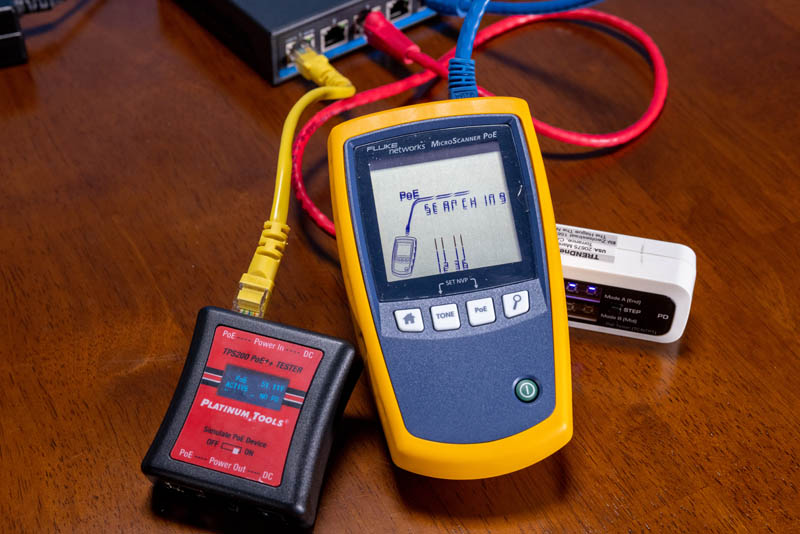
The above shows the blue Ethernet cable that the Fluke is attached to on Port 5 and it does not have PoE. When we attach the Fluke to Port 4, we get 51W PoE++ Class 6 power delivery. On a 65W power brick, this is actually a lot of poewr.
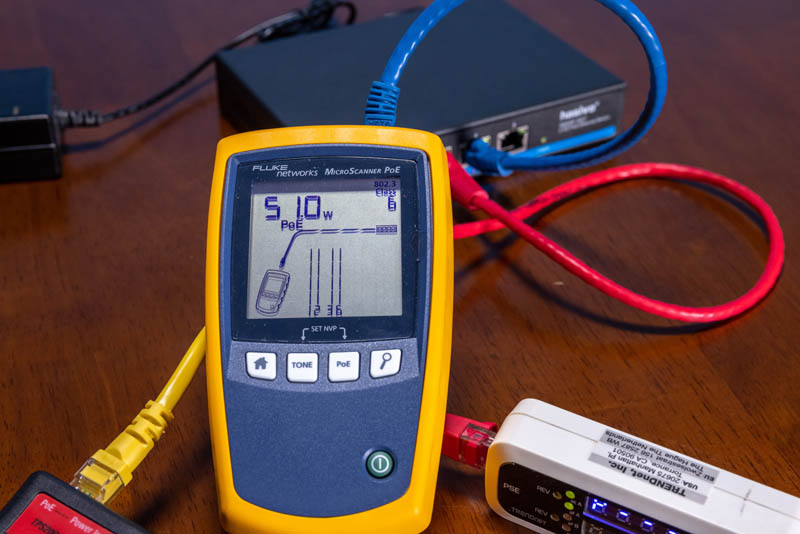
Here we can see our old Platinum Tools Tester finding PoE delivery.
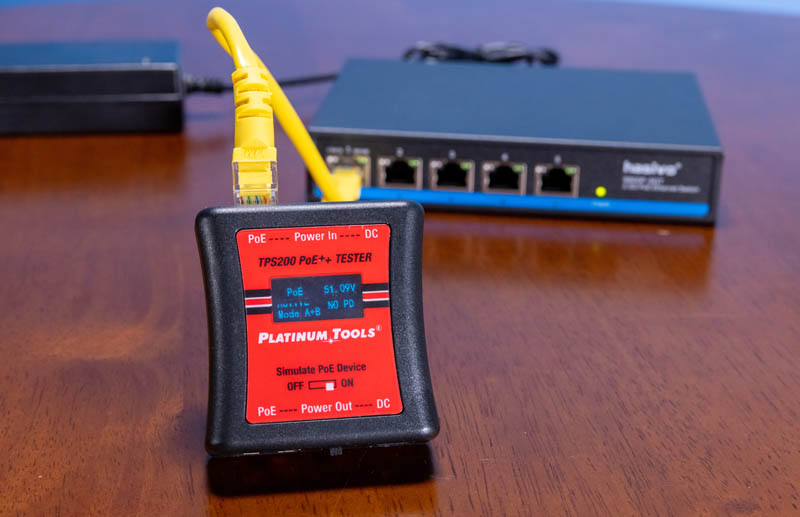
Here is the TRENDnet Inline PoE Tester on port 3 with PoE. The two green lights mean we have 802.3at Mode A (PoE+). We can also see the 52.2V power being delivered.
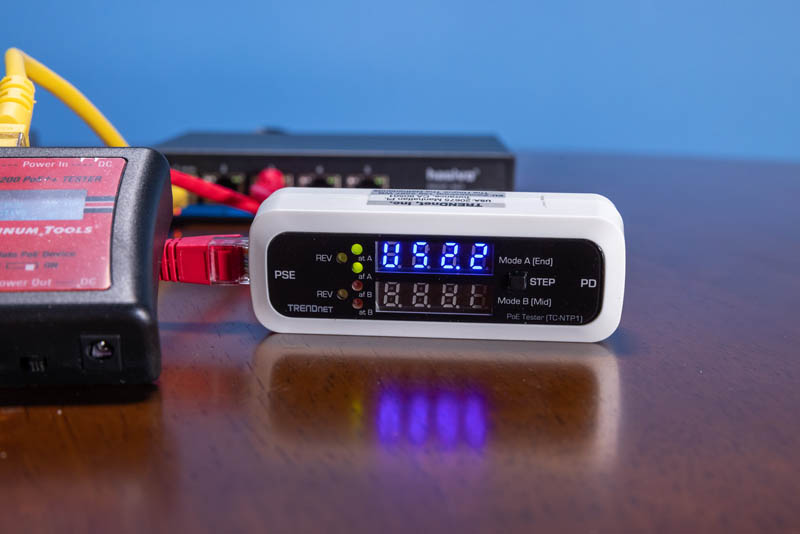
When we validate Port 5 with the same tester, we get no power delivery.
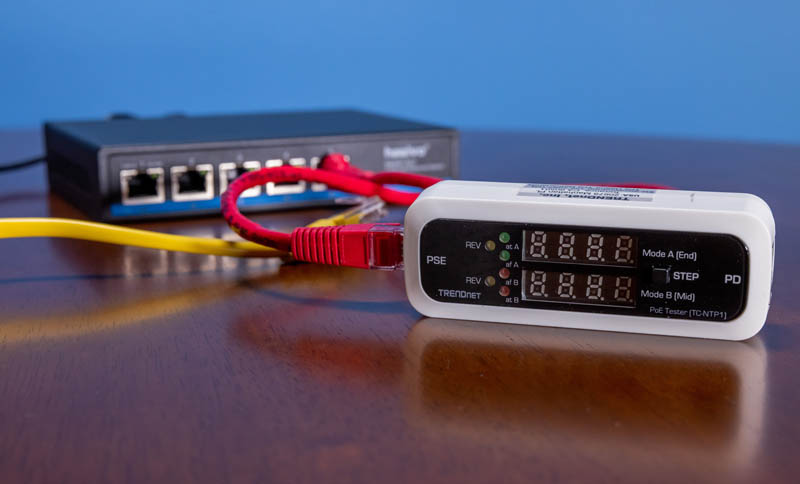
Between the 4-port PoE board, and the results of Port 5 not showing power delivery on our testers, this is a 5-port 2.5GbE switch with four ports of PoE+. Although the Fluke was showing PoE++ at 51W power delivery, we would likely need another power supply to support that kind of power output.
Hasivo S600-5GT Performance and Power Consumption
In terms of the overall 2.5GbE performance, we were able to get fairly normal 2.5GbE speeds from each of the five ports.
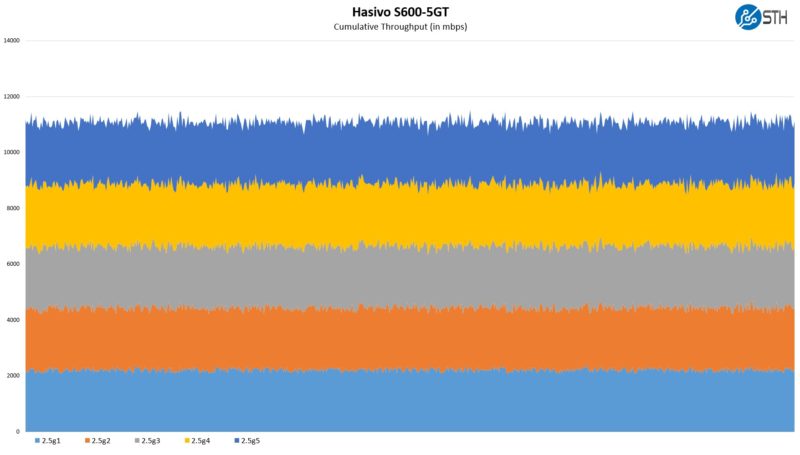
We saw idle power consumption of around 5.5W. Adding each successive 2.5GbE link also included an additional 1.4-1.7W or so of incremental power consumption. Our sense is that given the 65W power supply, this is why this is only a PoE+ switch. We should also note that while one can easily power PoE+ devices, connecting four 20W+ devices would be too much power for the device to handle.
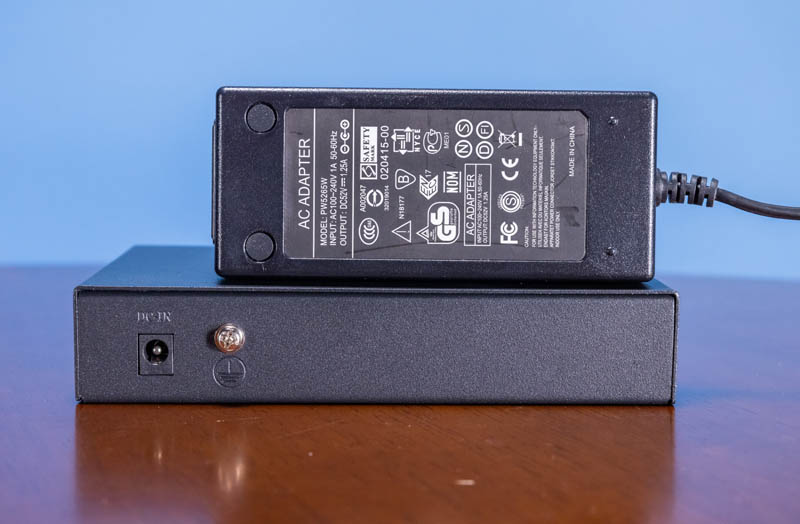
The switch itself is a fanless unit so we did not notice any noise.
Key Lessons Learned
The unit we purchased was $98.70 on AliExpress. There was a non-PoE version for $79.90. To us, getting four ports of PoE+ for $18.80 or $4.70 per port made sense. One should also note that shipping was $20.85. That adds 20% to the switch price. To us, the 8-port version adding three more ports and four additional PoE ports is worth the ~$30 increase in price including shipping.
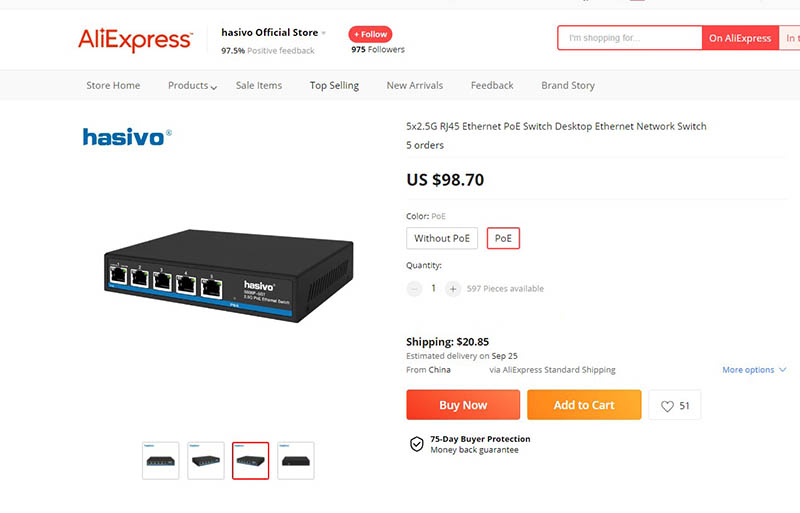
Something that many will miss is this. It is a 5-port PoE+ switch, but those should be taken separately. It is a 5-port 2.5GbE switch. Four of those five ports have PoE capabilities. It can run PoE+ but it will run out of power fairly quickly with PoE+ devices.
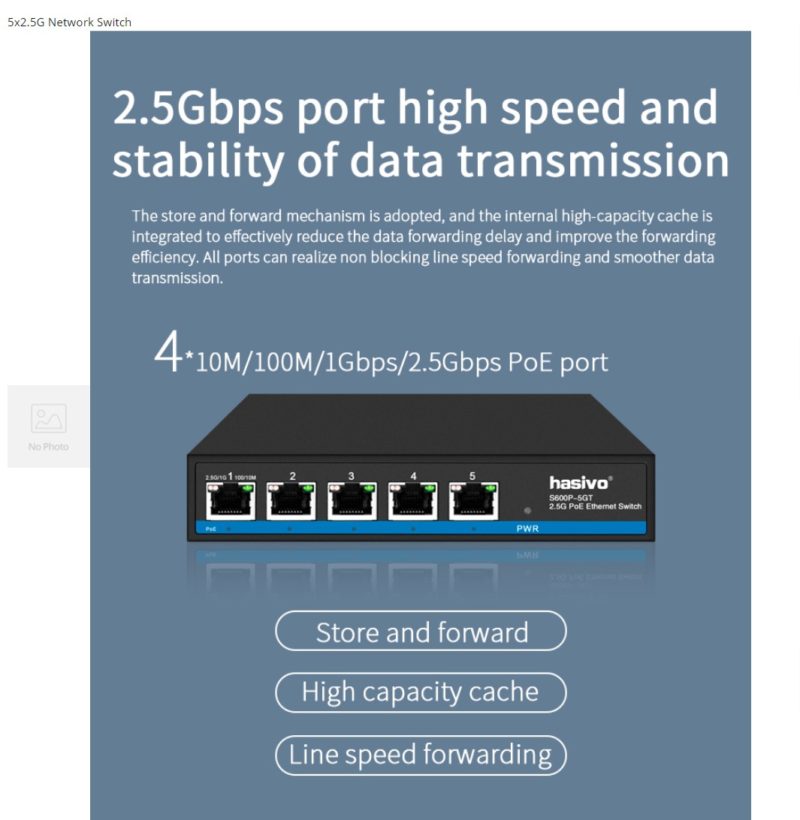
Those caveats are important especially since if you saw our 8-port review and then saw the PoE status LEDs below the ports you may think all five ports have PoE capabilities.
Final Words
The Hasivo S600P-5GT is certainly not a high-end switch. It is an unmanaged switch that is under $100 or around $120 with shipping. What it does do is provide both 2.5GbE speeds and also PoE capabilities at a relatively low price point. We previously saw the TRENDnet TEG-S350 5-port 2.5GbE switch that has now come down to around $130 shipped at some online sellers. While it may seem like that is only a marginally more expensive 2.5GbE option, the TRENDnet does not have PoE. To us, the Hasivo is a better value.
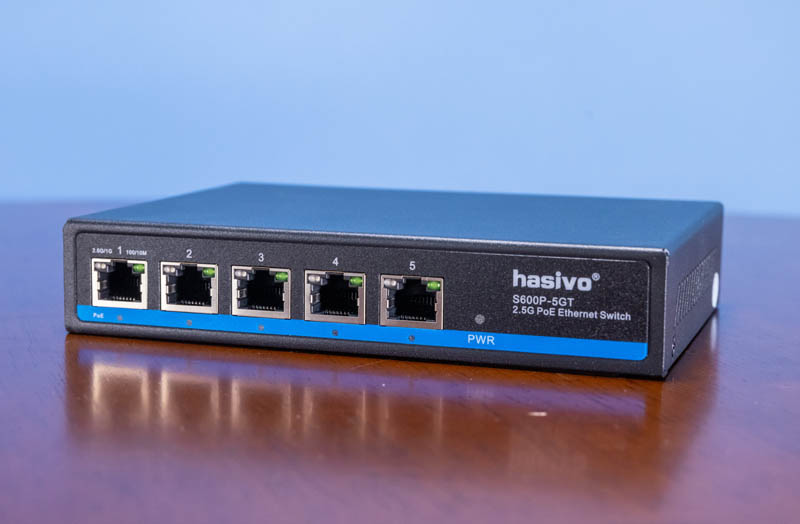
As with the 8x 2.5GbE version, there are still some caveats to getting this type of device like not having the proper regulatory markings on it. The warranty might be challenging (we have not tried it.) Still, for just inexpensive devices, these are interesting options. It is just that the 8-port versions provide more PoE ports and more 2.5GbE ports for a very low incremental cost that makes it so we would pick the 8-port version over this 5-port version.




Having one port without POE make sense if you think about the need for a link back into the network, which most likely will not need POE.
What James said, a single port without PoE is no loss of function at all. Would have been nice to label it more clearly, but there’s no practical way to use all ports as PoE.
Also, those fibreglass strands sometimes happen when you use a vgroove to partition pcbs, it is a lower cost option than panelising using routed tabs, but toey do leave rough edges. Makes complete sense on a product like this one.
@James+Shane, if your uplink goes to a wireless bridge, you’ll want PoE for this port as well.
2.5 GigaDataBitsPerSecond
Will it pass VLAN tags or jumbo frames?
Can the switch itself be powered by PoE? If so, that single non-poe port could be more useful.